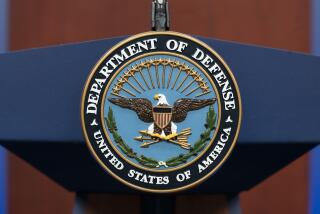Troop buildup timing uncertain
WASHINGTON — The U.S. commander of day-to-day military operations in Iraq said Friday he would make a recommendation this summer on how long to continue the American troop buildup in Baghdad and left open the possibility of a long-term increase.
Army Lt. Gen. Raymond T. Odierno, the second highest ranking American general in Iraq, said he would make his first assessment of the expanded U.S. troop presence in July or August. His proposal will be reviewed by Army Gen. David H. Petraeus, the top U.S. commander in Iraq, who will make his own recommendation to Washington.
“We have not even completed our surge yet. I remind you we still have two full brigade combat teams and an aviation brigade that has not yet arrived here in Iraq,” Odierno told Pentagon reporters in a teleconference from Baghdad. “So let’s get the surge in place first, the full surge, and let us see what the effects of that are for the first months here.”
A crucial question will be how well the Iraqi government and security forces develop.
“That’s what this is about -- building up capacity so we can move forward,” Odierno said. “It’s also about securing the populace throughout Baghdad and the rest of Iraq.”
Once U.S. forces are in place, Odierno said, it is possible that he could determine that security could be maintained with fewer forces.
Odierno said that in military terms, the troop buildup was considered a “surge,” or temporary increase in forces. But some in the military also have called the troop increase a “plus-up,” signifying a more permanent escalation of force levels. Odierno said he and Petraeus would have to decide this summer whether to make the buildup more permanent.
“All along, we defined it as a surge,” he said. “Could that change later on? Maybe. To a plus-up? Maybe. That’s what we’ll have to decide in July or August when we make our determination.”
Three of the five extra U.S. brigades ordered to Baghdad in January are in place, and Odierno said the other two combat brigades would be in place in June. Although President Bush has ordered those brigades to secure Baghdad, Odierno said he would need to decide precisely where to send them.
Putting them inside the city would allow the U.S. to increase combat outposts in Baghdad neighborhoods and potentially improve residents’ sense of safety. But placing the units outside Baghdad might help intercept car bombs and Al Qaeda insurgents, he said.
“We go through that very thoroughly, where and how we’ll use these incoming brigades,” he said.
More to Read
Sign up for Essential California
The most important California stories and recommendations in your inbox every morning.
You may occasionally receive promotional content from the Los Angeles Times.










